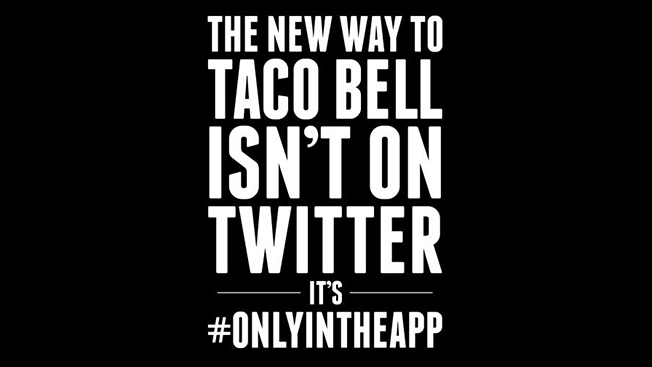Online, it all comes down to one thing: content. Whether it’s putting the consumer’s skills to the test and seeing what ads and ideas they can come up with for a contest, or whether you sit down and write it/film it/draw it yourself, content is what will draw consumers into your brand and keep them coming back for more, get them to like your Facebook page and sub your YouTube channel.
This week, adHOME covered some of the most innovative ideas companies have used to generate content that perpetuates their brand and brand image and keeps consumers delighted and engaged.
The first campaign we looked at was almost an anti-campaign. Taco Bell made a bold move and decided to black out all their social media platforms, all to promote the launch of their new app, making it the only way to interact with the Tex-Mex fast food giant. The company took a risk to funnel all their fans into one channel—and it worked. In just 24 hours, 75% of restaurants had received an order made in the app. The app’s hashtag, #onlyintheapp, was trending on Twitter, even though Taco Bell had left Twitter, and the app rose in the app store to sit among competitors like Starbucks. It takes a lot for a brand to pull something like this off, and it doesn’t just mean hard work. A brand has to do this in the right environment at the right time. Fans have to have a reason to seek the brand, and that could mean loyalty, the desire for a burrito, or even a solid mix of both.

The next campaign on the list is The Praise Project from Pantene. The idea behind the campaign was to combat the pressure women in China feel from society. Because of gender expectations and China’s one-child policy, expectations for women are that they be a good daughter, wife, or mother. It is hard for women to make the decision to choose, and Pantene wanted to empower women to do so. Pantene created a mobile site that allowed friends and family to praise women for their accomplishments via digital cards that could be shared on social media. Over the course of the campaign, nearly 10 million cards were sent, and people opened up to Pantene as a brand that understood the modern woman.
Union Station in Kansas City also ran an interesting campaign that allowed users to interact with the history of the old train station. By downloading an app, consumers could see the history as augmented reality, the past laid over what a user’s camera was filming in real time.
We also looked at a couple campaigns from Dallas Pets Alive, which is an organization that orchestrates fostering and adoption of animals in need of a home. One of their campaigns consisted of inserting one of their dogs into a popular Instagram picture, which they dubbed #muttbombing, complete with a reply to the original image.

They also ran a video campaign in which dogs were named after what was trending at the time, i.e. SupremeLeaderKimJongUn. Picture a woman calling SupremeLeaderKimJongUn for his dinner. The advertisements were clever and funny and used popular media to garner attention from their target audience.
The last campaign was Comcast’s Emily’s Oz. Emily is a girl who was born blind. Her favourite movie is the Wizard of Oz. To celebrate the launch of further features to help the visually impaired enjoy entertainment, Comcast listened to Emily’s descriptions of Oz and the beings in Oz and then created them from those descriptions. The result is a fascinating and beautiful rendition of the very merry land of Oz that reached consumers not just because it was available, but because it was charming and grew hugely popular.